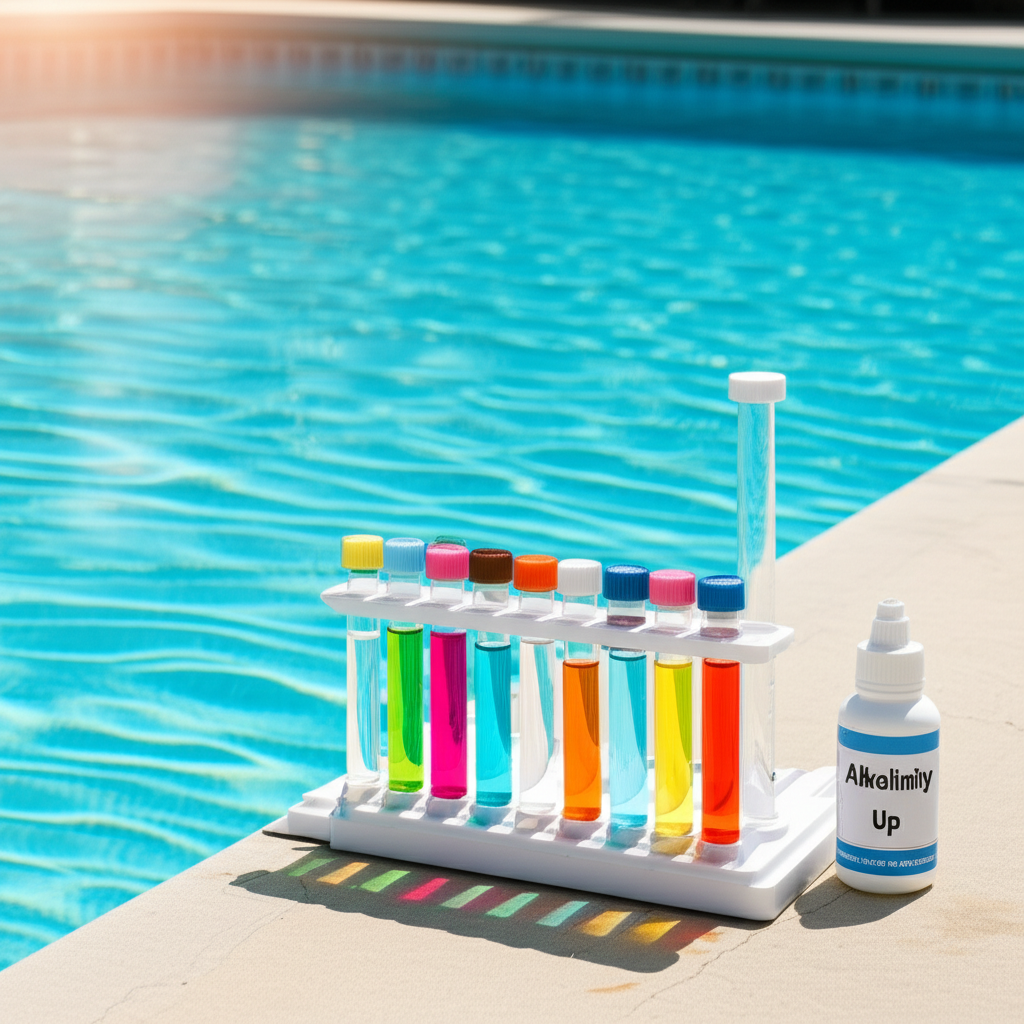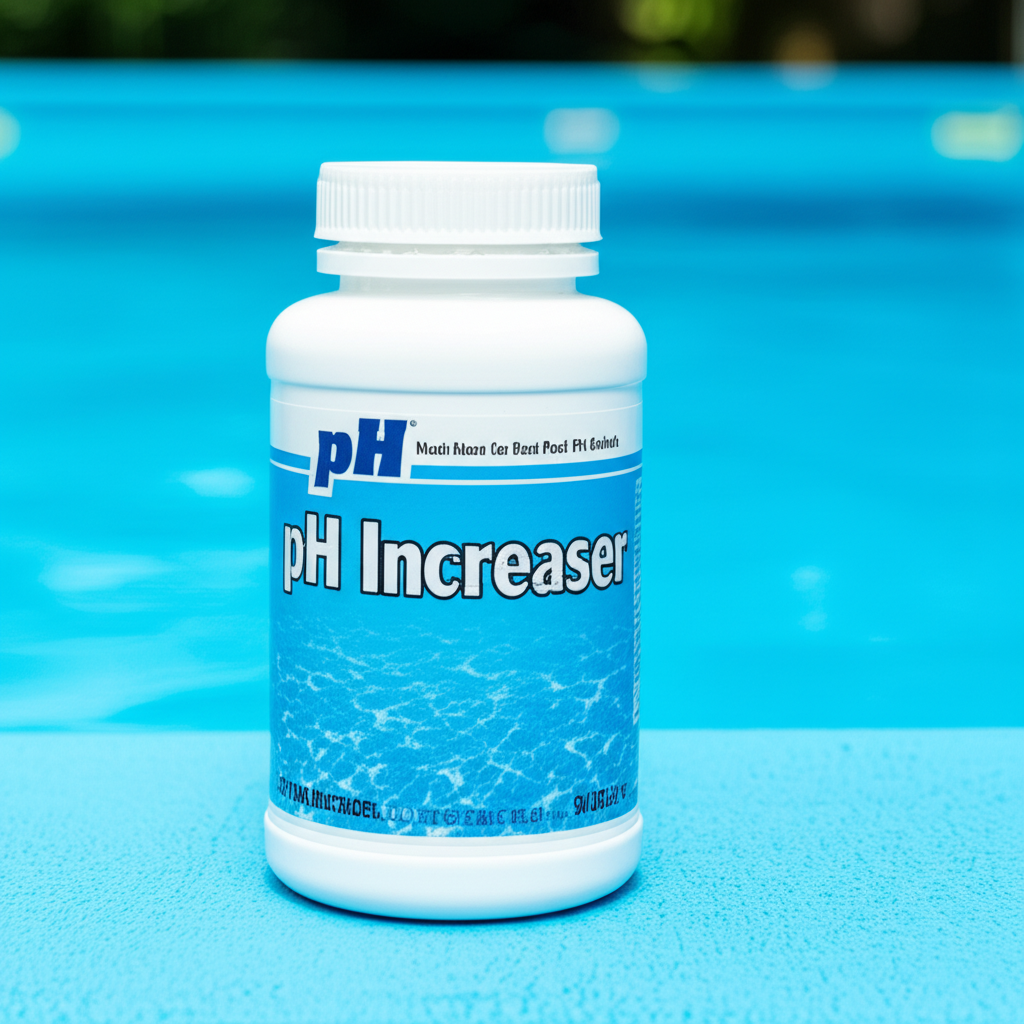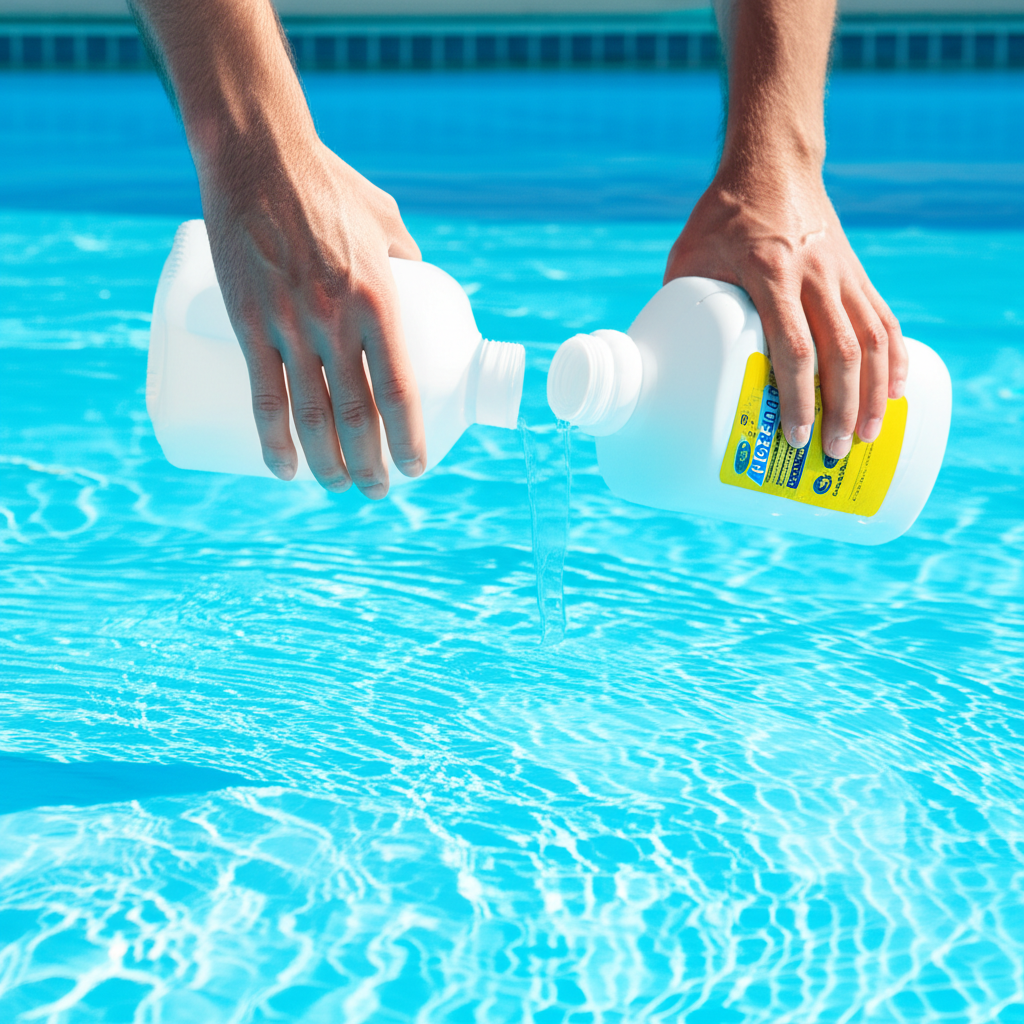Total Alkalinity: Essential for Perfect Pool Balance
Total Alkalinity (TA) is arguably one of the most critical, yet often misunderstood, components of maintaining a perfectly balanced and healthy swimming pool. Far from being just another chemical level to check, TA acts as your pool’s primary pH buffer, preventing frustrating and damaging fluctuations that can wreak havoc on your water quality, equipment, and even bather comfort. Understanding and correctly managing your pool’s total alkalinity is not just recommended, it’s absolutely essential for an enjoyable and long-lasting pool experience.
Understanding Total Alkalinity in Your Pool
At its core, Total Alkalinity refers to the concentration of alkaline substances, predominantly bicarbonates, carbonates, and hydroxides, dissolved in your pool water. These compounds collectively resist changes in the water’s pH level. Think of total alkalinity as a protective shield for your pH. Without sufficient alkalinity, your pool’s pH would swing wildly in response to environmental factors like rain, bather load, chemical additions, or even sunlight exposure. The ideal range for Total Alkalinity in most swimming pools is between 80 to 120 parts per million (ppm), with some experts suggesting levels up to 150 ppm for specific pool types.
Why is Optimal Total Alkalinity So Crucial?
The significance of maintaining appropriate TA levels extends far beyond simply avoiding pH rollercoasters. It impacts nearly every aspect of pool health:
1. pH Stability: This is TA’s primary role. If TA is too low, the pH will be unstable, prone to dropping (becoming acidic) after rain or rising (becoming basic) with aeration or sun exposure. If TA is too high, the pH becomes difficult to adjust.
2. Chlorine Efficiency: Chlorine, the most common pool sanitizer, works most effectively within a specific pH range (typically 7.4-7.6). When TA keeps pH stable within this optimal range, your chlorine can do its job efficiently, killing bacteria and algae. Unstable pH means inefficient chlorine, leading to more chemical usage and potential water quality issues.
3. Preventing Corrosion and Scaling: Low TA often leads to low pH, making your water corrosive. This acidic water can damage pool surfaces (etching plaster, fading liners), corrode metal components like heaters, pumps, and ladders, leading to costly repairs. Conversely, very high TA can contribute to high pH, which promotes scaling – the buildup of calcium deposits on pool surfaces and equipment – and makes the water cloudy.
4. Bather Comfort: Extremely low or high pH, often a symptom of imbalanced TA, can cause discomfort for swimmers. Low pH can lead to eye irritation, itchy skin, and damage to hair. High pH can also cause skin and eye irritation and make the water feel less pleasant.
5. Water Clarity: Proper TA helps maintain steady water chemistry, which contributes significantly to water clarity. Imbalanced chemistry, often starting with out-of-whack TA, can quickly lead to cloudy or murky water.
Testing Your Pool’s Total Alkalinity
Regular testing is the cornerstone of effective pool maintenance. You should test your pool’s Total Alkalinity at least once a week, and more frequently during periods of heavy use, after significant rainfall, or if you notice any unusual water conditions.
Test Strips: These are convenient and provide a quick snapshot of multiple parameters, including TA. While easy to use, they may offer less precise readings than liquid kits.
Liquid Test Kits: These kits typically involve adding reagents to a water sample and observing color changes. They generally provide more accurate and reliable readings for Total Alkalinity.
Always follow the manufacturer’s instructions for your specific test kit to ensure accurate results.
Adjusting Total Alkalinity Levels with an Alkalinity Increaser
If your test reveals that your Total Alkalinity is outside the ideal 80-120 ppm range, adjustments are necessary.
When Total Alkalinity is Too Low:
This is the most common issue. Low TA means your pool water lacks buffering capacity, making the pH susceptible to drastic changes.
To raise Total Alkalinity, you will need an Alkalinity Increaser, which is primarily sodium bicarbonate (baking soda).
Calculate: Determine the amount of alkalinity increaser needed based on your pool’s volume and current TA level. Product labels usually provide dosing charts. A general rule of thumb is that 1.5 lbs of sodium bicarbonate per 10,000 gallons of water will raise TA by approximately 10 ppm.
Dissolve: Pre-dissolve the measured amount of alkalinity increaser in a bucket of pool water (never add directly to the skimmer) to prevent cloudiness and ensure even distribution.
Distribute: Slowly pour the dissolved solution around the perimeter of the pool or in front of a return jet.
Circulate: Run your pool pump for a few hours to allow the chemical to mix thoroughly.
Re-test: After 6-8 hours, re-test your TA levels. You may need to repeat the process in stages if your TA was significantly low, avoiding adding too much at once.
When Total Alkalinity is Too High:
High TA can make your pH difficult to adjust downwards and contribute to scaling. To lower Total Alkalinity, you typically introduce an acid like muriatic acid (hydrochloric acid) or a dry acid (sodium bisulfate). This process requires greater care as it also lowers pH.
Small Increments: Add acid in very small doses, carefully following product instructions. Muriatic acid should always be diluted, and you should always add acid to water, not water to acid.
Aeration: Aerating your pool (e.g., waterfall, air bubblers, pointing return jets upwards) can help raise pH while TA remains stable or drops slightly, which can be useful after lowering both TA and pH with acid.
Professional Help: If your TA is excessively high, consider consulting a pool professional to avoid over-correcting and creating new problems.
Maintaining Optimal Total Alkalinity for Pool Longevity
Consistent monitoring and proactive adjustments are key to keeping your pool’s total alkalinity in the sweet spot. Rain can dilute TA, while evaporation can concentrate it. Heavy bather loads or the introduction of various chemicals can also impact alkalinity levels. By prioritizing Total Alkalinity in your weekly maintenance routine, you ensure a stable foundation for all other chemical balances. This foresight will not only protect your pool’s equipment and surfaces but also guarantee that every swim is in pristine, comfortable water, truly making your pool your personal oasis.




